Building inclusivity: How to create more inclusive user onboarding

.png)

.png)
Your customers might be solving similar problems, but they're coming at it from different points of view, backgrounds, and levels of experience.
When you search for "inclusivity in onboarding" you find a lot of results related to onboarding new team members, teaching your diversity and inclusivity policies, and training a team to be inclusive from a human resources perspective.
That’s a good thing to be sure—but what about onboarding new customers to your platform?
How do you tackle the big problem that no two customers are exactly alike?
Sally Krawcheck, former CEO and co-founder of Ellevest, says that “diversity can improve business results".
If that's true at an internal level, what about external? How can making your new user onboarding more inclusive improve your conversions and retention?
A recent article in Forbes shares five strategies to create a culture of inclusion. It is, of course, written about employee/employer relationships.
The author, Cat Graham, walks us through some of the key ways to "have user-friendly onboarding systems and a high level of touch as your new hires settle in." (Pro tip: Implement Cat’s suggestions for your own team.)
But what we really love around here is user onboarding.
So I want to talk about how we can use the steps Cat outlines to build a more inclusive onboarding experience for our users, too.
First, we need to define what we mean by “inclusivity”:
On the surface, inclusivity can look like a way to make sure there are different types of people in the pictures on your website. Of course, inclusivity goes much deeper than that.
Inclusivity is not the act of making sure that all kinds of people are around. That’s diversity. Inclusivity is making sure that all of those types of people are SEEN—and feel seen.
It’s showing your customers that your company is made up of different types of people with different backgrounds, life experiences, and interests. It’s about empowering people from different walks of life, both within your company and without. And it’s an excellent way to connect with your customers on a personal level.
Why should you care about inclusivity?
Well for one thing, it’s the right thing to do.
But you should also care because we live in a buyer’s market. Your customers have choices in the products they use and, so far, they’ve chosen yours. Building a personal connection through inclusivity in your onboarding builds stronger ties with your customers—the sort of ties that can sometimes mean the difference between your product and your competitors’.
Now that we understand why inclusivity matters, let’s unpack the ways inclusivity is used in employee onboarding and talk about the steps you can take to apply it to your user onboarding.
Create a clear purpose statement declaring their commitment to a culture of inclusion.
Make inclusivity a part of the very DNA of your culture…and then tell the world about it.
This doesn’t necessarily mean that your onboarding is the time or place to share your mission statement with new customers. Remember, your customers want to see how your product is going to help them achieve value—so diving in with a story about your belief system isn’t likely to move the needle.
Instead, think about a key way you can help your new users feel seen: segmenting.
Group customers into smaller cohorts based on their use cases, interests, or history. By speaking to your users’ specific needs, you create a more personalized and inclusive environment.
Think about it this way: An email that’s for everyone is actually for no one.
You can build segmenting into your in-app onboarding and track that data through to email, or you can use your onboarding emails to find out more about your customers.
Take a peek at this welcome email from CoSchedule:

Or Bespoke Post’s preference center email (which, by the way, is part of the onboarding sequence, not the beginning of it):
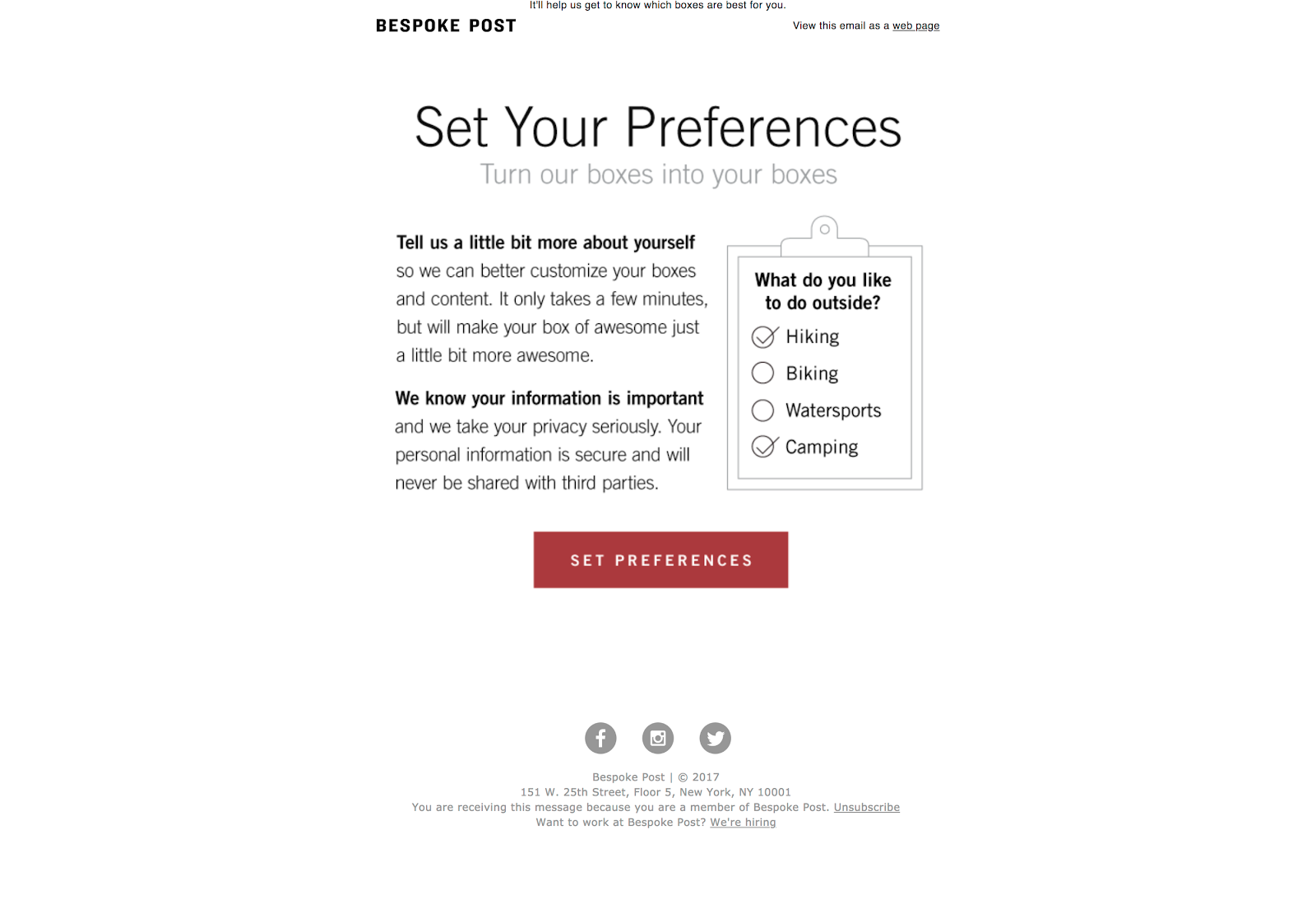
By clicking on a link in that CoSchedule email or making updates to the preference center over at Bespoke Post, the new customer is taken on a customized journey based on their interests.
Creating inclusive onboarding starts with seeing people for who they are and acknowledging that everyone has different interests and different points of view.
The next tip for company onboarding is to get everyone involved.
Give everyone a chance to facilitate the brainstorm, to visibly demonstrate how bringing different people with different voices to the table can drive solutions to complex problems.
And involving people who aren’t like you is precisely how you can build an inclusive onboarding experience.
Onboarding is all about the user journey:
So how do you get the answers to these questions? Well, customer interviews are a great place to start.
And then, once you have those details, you’ll want to build out something worth testing.
User testing is usually thought of as an external process, but for the Teachable team it made sense to start building their testing process with internal stakeholders.
As Teachable’s product designer Allan Buntoengsuk put it,
Having non-product/engineering employees participate in user testing can serve as a way to gain familiarity with different parts of the product while also taking the veil off the design process. It’s also an opportunity to have different members of the product team practice leading tests in a low-stress environment — equipping anyone to be able to conduct quick tests if need be.
And diversity in testing isn’t reserved just for your team.
Lorraine Twohill, CMO at Google, is listening to everyone at the table.
An agency lead spoke up about a feature for Hispanic users none of us had considered. He was Latino. His experiences gave him a different lens than everyone else in the room. That’s invaluable.
Even the most diverse team comes with inherent biases. That’s when it’s time to break out external tests. And testing can be as quick and simple as using software like UserTesting.com or as hands-on as Appcues’ User Test Fest events.
What matters most is that outside perspectives are brought in to bear on your onboarding experience. Rachel Decker, PM at ezCater and former Senior UX Researcher at HubSpot, reminds us that patience is everything here:
[Place] extreme importance on making users feel comfortable to make mistakes and show where they’re getting tripped up. Those are exactly the areas that you’re overlooking as an expert in your own product and where you’ll find your opportunities to improve.
Your team should represent different backgrounds and, therefore, the voices of your employees and customers.
It’s true that your new users want to get to know the leaders of the company. But are the leaders the ones answering support tickets or on webinars with customers?
More importantly, are the people your customers see in their onboarding emails reflecting the world around them?
Just like in employee onboarding, your new users want to know two things about your company:
Many of my clients notice that their customer base is largely made up of women (which makes sense in the B2C SaaS world where female entrepreneurship is rising). By contrast, the number of women in leadership roles in tech is still low—anywhere from 19% to 41% at some of the top software companies.
Your company is made up of diverse personalities, experiences, and skills. Show them off and let the individuals shine through to make a connection with your customers.
KickoffLabs does a great job of this by introducing a key support team member in their onboarding email sequence:
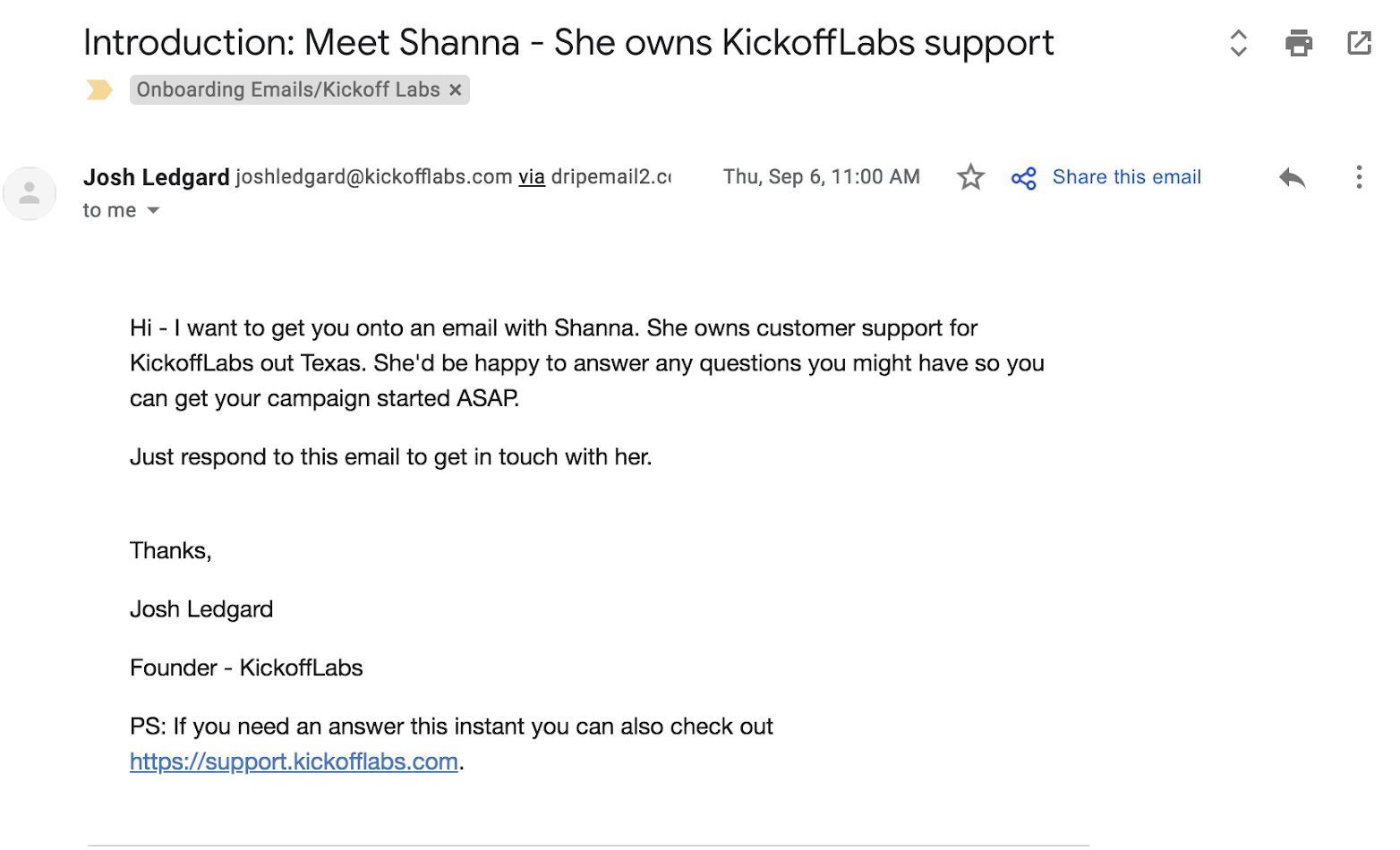
As do these business partners who not only share their personal story, but also give a visual aid for learning more about who they are.
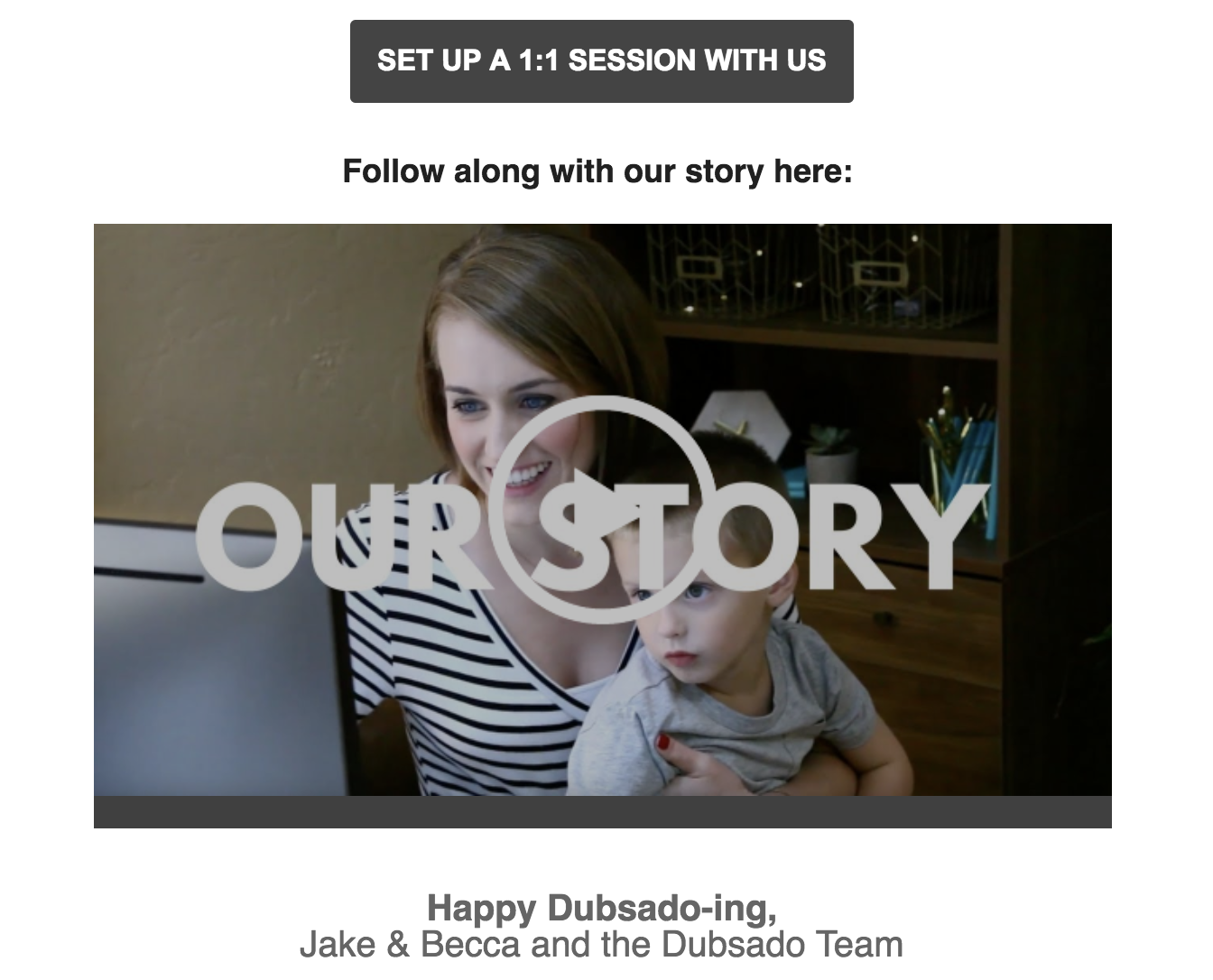
Mentally flip the person with whom you are dealing with someone else to test for potential bias. If it feels wrong or weird to you, then you know it’s your unconscious bias coming to the surface.
Now that you know who your customers are and what demographics they cover, try on their shoes for a bit as you read through your onboarding emails and in-app notifications.
Lorraine Twohill has come to an important—and game-changing—conclusion:
Language, styles, and word choice carry subtle messages that could include or exclude audiences. Consider when it’s appropriate to use gendered or non-gendered pronouns and be conscious of your word choice.
In order to craft inclusive copy, you have to ask yourself some tough questions.
The road to problematic onboarding is paved with good intentions. Introspection can help prevent your best intentions from turning into problematic or exclusive onboarding experiences.
Which is where personalization can help your user onboarding shine.
Imagine signing up for something as a beginner and receiving the advanced how-to guide to kick things off. You’d likely end up feeling a little incompetent, if not bewildered, by the discrepancy between the material and your skill level.
Now imagine getting something completely customized to you and your needs. Brennan Dunn, personalization expert and founder of RightMessage, reminds us:
People have different reasons for deciding to follow your content. Find out what those are, and send people down different curated pathways based on what you know about them.
Over time, you’ll be able to automatically segment subscribers based on the lead magnets they opt-in to, the content they’re reading, trigger links they click, and other behavioral cues [...] allowing you to personalize the kind and cadence of content someone receives based on who they are.
You can build that segmenting into your in-app onboarding or you can make it as simple as asking a question in a welcome email to help your new customers segment themselves. Take a look at this email I wrote for the team at Podia before they put their in-app segmenting in place:

Celebrate and communicate with your employees how diversity and inclusion have impacted creativity, engagement and results.
Internally, sharing milestones is an important way for a team to feel connected. You announce birthday celebrations, tell everyone how Karen completed her first marathon, and post pictures of your dogs in Slack (you do have a dog Slack channel, right?!).
Another way to celebrate with your team is to talk about the impact various initiatives are having on the company as a whole. For example, at your staff meetings you might talk about the fundraiser you held last month and the total amount the team collectively raised. On the inclusivity front, you may be sharing how hiring a team member directly from a tech bootcamp brought a fresh perspective and helped speed up a solution to a big problem.
While you might not tell your customers about your inclusivity initiative directly, you can show them how they belong with milestone celebrations.
An end-of-month scorecard is one way to go:
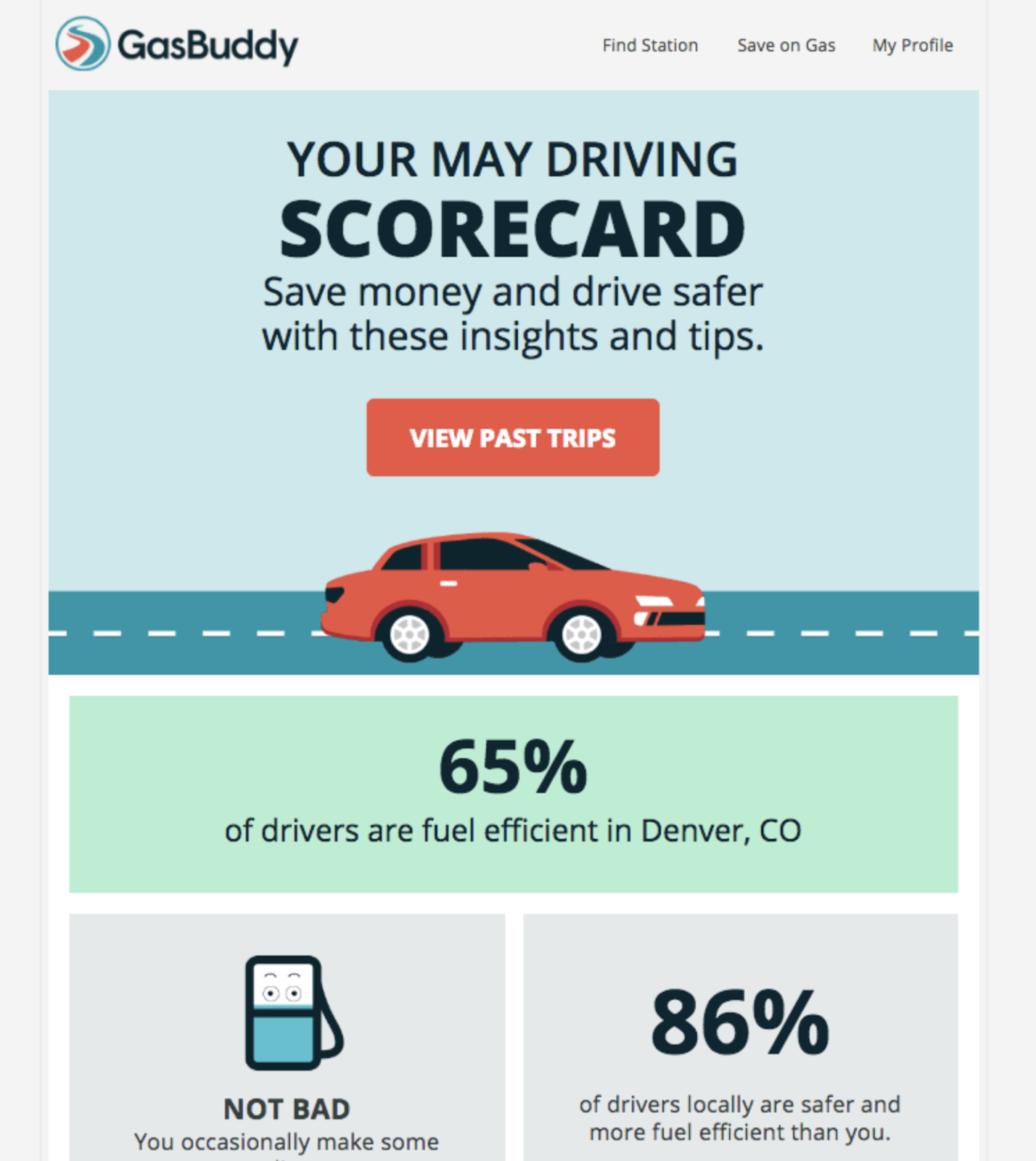
Try adding milestone celebrations into the onboarding experience to show users that they’re on the right track:
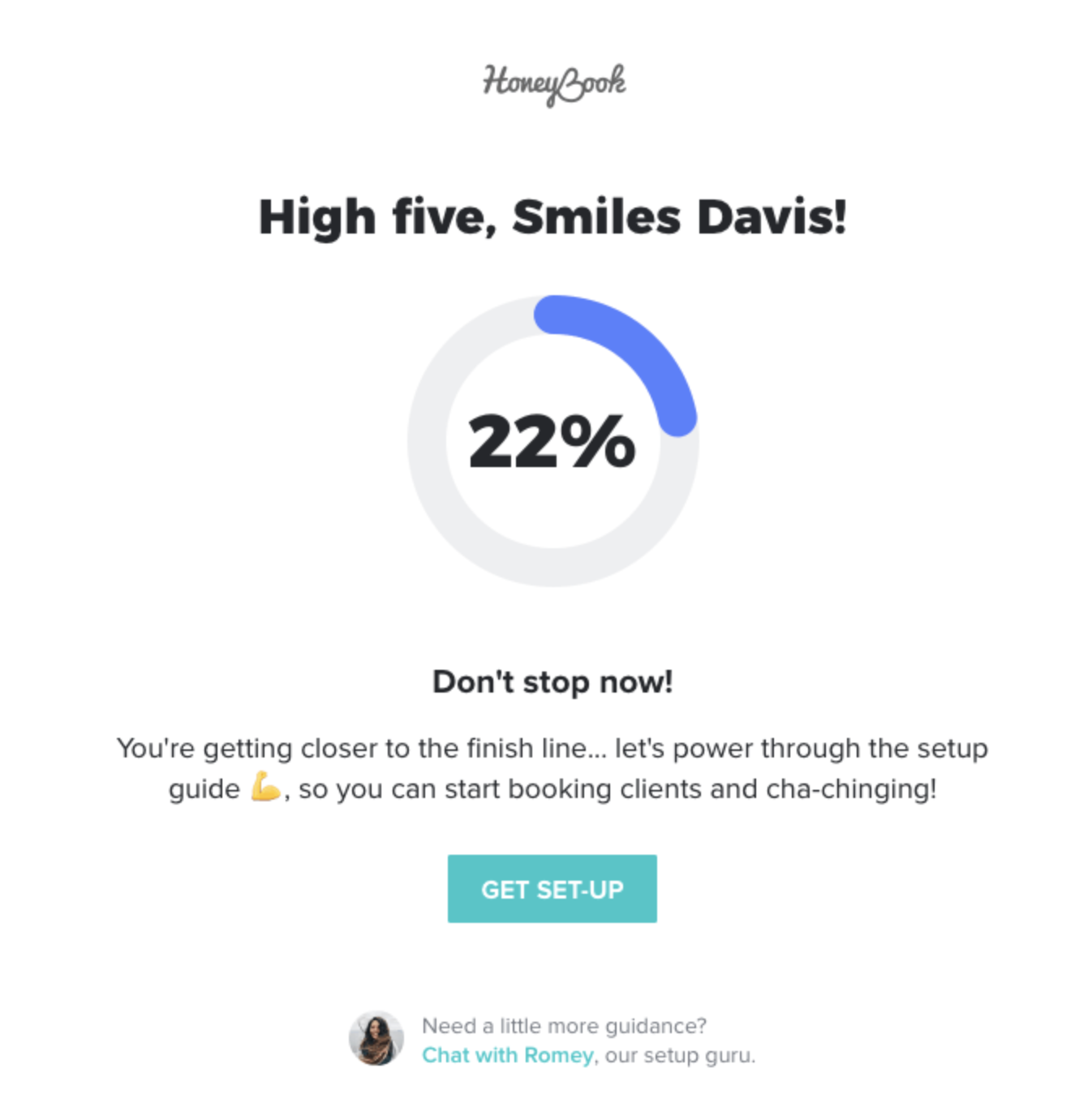
Just like your team wants to know that they’re in the right place when they come to work, your customers want to know that they’re more than just a number to you.
Your company won’t exist without your customers. Attracting them in one thing—but are you retaining them long term?
Creating a powerful onboarding experience is Step 1 in building those long term relationships. When you infuse that onboarding with inclusivity, you decrease churn, increase connection, and improve the experience for everyone—from your developers to customer support to the customers themselves.
Everyone wants to be seen. Inclusive onboarding is your path to helping your customers know that you see them, just as they are.
